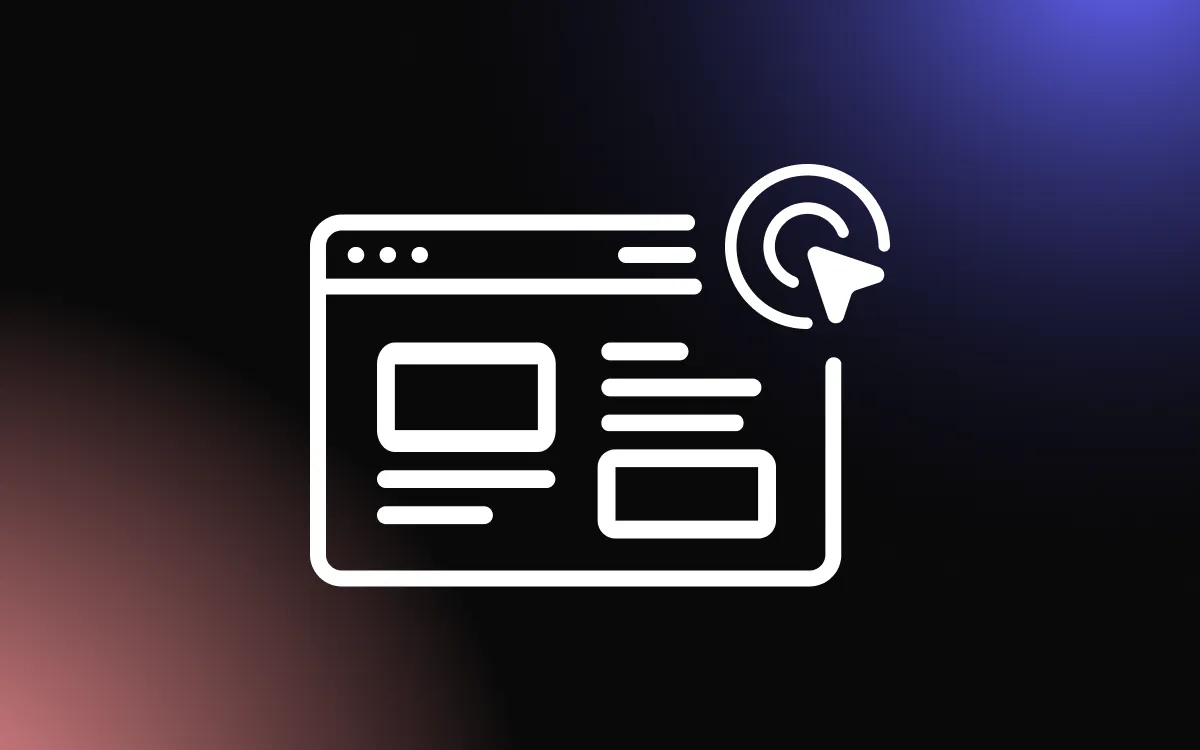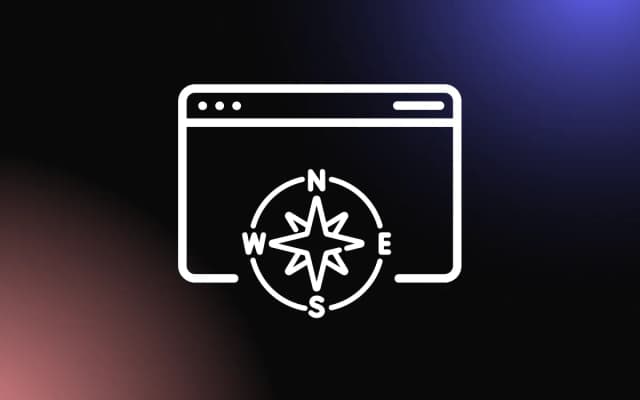
Many businesses launch websites that look identical to thousands of others, failing to stand out in crowded digital markets.
Generic templates and standard layouts create forgettable experiences that visitors abandon quickly. The solution lies in understanding what is website customization and implementing strategic personalization that makes your site memorable and effective.
In this article, we will explore website customization fundamentals, examine how interactive widgets transform user experiences, and discover practical tools that make professional customization accessible to everyone.
Understanding Website Customization Basics
Website customization involves modifying and personalizing your site's appearance, functionality, and user experience to match your specific needs and brand identity. This process goes far beyond changing colors and fonts, encompassing everything from layout modifications to interactive feature additions that enhance visitor engagement.
Modern website customization empowers businesses to create unique digital experiences without extensive technical knowledge. Advanced content management systems and widget platforms provide drag-and-drop interfaces that make complex customizations simple. These tools democratize web design, allowing anyone to create professional-looking websites.
The scope of website customization includes visual elements, interactive features, and functional components. Visual customization covers colors, fonts, layouts, and imagery that reflect your brand personality. Interactive elements include sliders, galleries, forms, and widgets that engage visitors actively. Functional customization adds specific capabilities like booking systems, calculators, or e-commerce features.
Customization strategies must balance uniqueness with usability. Highly customized sites should maintain intuitive navigation and fast loading speeds. The goal involves creating distinctive experiences that feel familiar and easy to use. This balance ensures customization enhances rather than hinders user experience.
What Is Website Customization in Practice
What is website customization when implemented effectively? It represents the strategic modification of website elements to create personalized experiences that resonate with specific audiences. This approach transforms generic templates into unique digital platforms that reflect brand values and meet user expectations.
Practical website customization begins with understanding your audience's preferences and behaviors. Different industries require different approaches. Professional services might emphasize credibility through clean layouts and testimonials. Creative businesses could showcase portfolios through dynamic galleries and bold visual elements. E-commerce sites need streamlined navigation and prominent product displays.
Brand alignment drives every customization decision. Your website should reinforce brand messaging through consistent visual elements, tone of voice, and user experience design. Color schemes should match brand guidelines. Typography choices should reflect personality traits. Interactive elements should support brand positioning and values.
User experience optimization guides technical customization choices. Fast-loading pages retain visitor attention better than slow, heavily customized sites. Mobile responsiveness ensures customizations work perfectly across all devices. Accessibility features make customized sites usable for people with disabilities, expanding your potential audience.
The Business Impact of Website Customization
Website customization directly impacts business performance through improved user engagement and conversion rates. Customized sites capture attention more effectively than generic alternatives, reducing bounce rates and increasing time spent on pages. These engagement improvements signal quality to search engines, potentially boosting organic rankings.
Brand recognition strengthens significantly through consistent website customization. Visitors remember unique visual elements and interactive features that differentiate your business from competitors. This memorability increases return visits and word-of-mouth referrals, creating valuable long-term marketing benefits.
Conversion optimization becomes more effective with targeted customization. Custom forms can reduce friction in lead generation processes. Personalized product recommendations increase sales opportunities. Tailored content speaks directly to specific audience segments, improving relevance and response rates.
Professional credibility increases through thoughtful website customization. Well-designed custom elements demonstrate attention to detail and investment in quality. This perceived professionalism influences purchasing decisions, especially for high-value products or services where trust matters significantly.
Essential Elements of Effective Website Customization
Color schemes create immediate emotional responses and brand associations. Strategic color choices can evoke specific feelings like trust, excitement, or sophistication. Consistent color application throughout your site reinforces brand identity while improving visual cohesion. Consider your industry standards while finding ways to stand out appropriately.
Typography selections communicate personality and improve readability simultaneously.
Modern custom fonts can express creativity or professionalism depending on your brand needs. Font pairing strategies create visual hierarchy and guide reader attention through your content effectively. Ensure chosen fonts load quickly and display consistently across different browsers and devices.
Layout customization optimizes information presentation for your specific content and goals. Custom grid systems can showcase portfolios more effectively than standard blog layouts. Unique navigation structures can improve user flow for complex service offerings. Strategic white space usage creates focus and prevents overwhelming visitors with information.
Interactive elements transform passive browsing into engaging experiences. Custom animations can guide attention and create memorable moments. Hover effects provide immediate feedback and encourage exploration. Progressive disclosure techniques reveal information gradually, maintaining visitor interest while preventing information overload.
Leveraging Widgets for Enhanced Website Customization
Widgets represent powerful tools for adding sophisticated functionality to customized websites without complex coding requirements. These modular components integrate seamlessly into existing designs while providing specific features that enhance user experience and business functionality.
Image sliders showcase multiple visuals within limited space while maintaining clean design aesthetics. The Image Slider widget enables dynamic content presentation that keeps visitors engaged longer. Custom styling options ensure sliders match your brand perfectly while providing smooth transitions and mobile optimization.
Interactive galleries transform static image displays into engaging visual experiences. Visitors can explore products, portfolios, or testimonials through intuitive interfaces that encourage deeper exploration. Customizable gallery layouts adapt to different screen sizes while maintaining visual impact and loading speed.
Form widgets streamline lead generation and customer communication processes. Custom styling options ensure forms integrate seamlessly with your design while providing advanced features like conditional logic, automated responses, and spam protection. These capabilities improve both user experience and business efficiency.
Social proof widgets build credibility through customer testimonials and reviews. Displaying authentic feedback prominently throughout your site increases trust and conversion rates. Customizable review displays can match your design perfectly while automatically updating with fresh content.
Strategic Widget Integration for Maximum Impact
Successful widget integration requires strategic placement and thoughtful customization that enhances rather than clutters your website design. Each widget should serve a specific purpose in your overall user experience strategy while maintaining visual consistency with your brand elements.
Header sections benefit from attention-grabbing widgets that immediately communicate value propositions. Countdown timers create urgency for limited-time offers. News tickers display recent achievements or updates. These dynamic elements capture attention while providing useful information that encourages further site exploration.
Content areas throughout your site can incorporate widgets that support your messaging and goals. Pricing Tables present service options clearly while encouraging conversions through strategic highlighting and call-to-action placement. Interactive calculators help visitors understand potential benefits or costs related to your offerings.
Footer widgets provide final conversion opportunities without appearing pushy or aggressive. Newsletter signup forms capture leads from engaged visitors ready to maintain contact. Social media feed widgets demonstrate active community engagement and encourage follows across platforms.
Loading speed considerations must guide widget selection and implementation. Choose widgets that prioritize performance optimization and mobile responsiveness. Test loading speeds regularly and remove or replace widgets that negatively impact site performance. Fast-loading customized sites convert better than slow, heavily featured alternatives.
Advanced Website Customization Techniques
Responsive design customization ensures your personalized elements work perfectly across all device types and screen sizes. Custom breakpoints allow precise control over how elements adapt to different viewing conditions. Mobile-first customization approaches prioritize smartphone users while scaling up for larger screens effectively.
Animation and micro-interactions add personality and improve user feedback throughout customized sites. Subtle hover effects provide immediate response to user actions. Loading animations maintain engagement during brief delays. Scroll-triggered animations reveal content progressively, creating dynamic browsing experiences that encourage exploration.
Personalization engines take website customization to individual visitor levels. Dynamic content systems can display different messages, images, or offers based on visitor behavior, location, or demographics. This advanced customization creates more relevant experiences that improve engagement and conversion rates significantly.
Integration capabilities extend customization possibilities through third-party services and APIs. Custom integrations can connect your website with existing business systems, creating seamless workflows and improved efficiency. These connections enable advanced features while maintaining your unique design and branding elements.
Building User-Friendly Custom Experiences
Navigation customization must prioritize user understanding over creative expression. Unique navigation systems should feel intuitive despite being different from standard approaches. Clear labeling, logical organization, and consistent behavior help users find information quickly regardless of creative navigation designs.
Content presentation customization should enhance readability and comprehension. Custom typography systems improve visual hierarchy while maintaining accessibility standards. Strategic use of visual elements like icons, images, and white space guides attention and breaks up dense information effectively.
Interactive feedback systems help users understand how to interact with customized elements. Clear visual cues indicate clickable areas. Loading states provide feedback during processing. Success and error messages communicate results effectively. These details create smooth user experiences that encourage continued engagement.
User testing validates customization decisions before full implementation. Different audiences may respond differently to custom elements and layouts. A/B testing different customization approaches reveals which variations perform best for your specific goals and audience preferences.
Tools and Platforms for Accessible Website Customization
Modern website customization platforms provide powerful capabilities without requiring extensive technical expertise. Drag-and-drop interfaces make complex customizations achievable for users with varying skill levels. These tools democratize professional web design while maintaining flexibility for advanced users.
Widget libraries offer extensive customization options for specific functionality needs. Pre-built components save development time while providing professional features and designs. Customizable styling options ensure widgets integrate seamlessly with unique brand requirements and design aesthetics.
Template customization systems provide starting points that can be modified extensively while maintaining professional quality. Advanced template platforms allow deep customization of layouts, colors, fonts, and interactive elements. These systems balance efficiency with uniqueness, enabling rapid deployment of customized sites.
Code-free customization tools enable advanced features without programming knowledge. Visual editors provide immediate feedback as you modify design elements. Preview modes show how customizations appear across different devices before publishing changes. These capabilities make professional customization accessible to broader audiences.
Future Trends in Website Customization
Artificial intelligence integration will revolutionize website customization by enabling automatic optimization based on user behavior patterns. AI systems can suggest layout improvements, color scheme adjustments, and content modifications that improve performance metrics automatically. These capabilities will make ongoing customization more efficient and effective.
Voice interface customization will become increasingly important as voice search and smart speakers gain popularity. Websites will need custom voice navigation systems and audio content presentation methods. These adaptations will require new approaches to information architecture and user experience design.
Augmented reality features will add new dimensions to website customization possibilities. Custom AR experiences can showcase products in user environments or provide interactive demonstrations. These immersive customizations will create competitive advantages for businesses willing to invest in emerging technologies.
Privacy-focused customization will balance personalization with data protection requirements. Custom systems will need to provide relevant experiences without excessive data collection. Transparent customization approaches will build trust while delivering the personalized experiences users expect.
Elevate Your Digital Presence Through Strategic Customization
Website customization transforms ordinary web presences into powerful business tools that engage visitors, build brand recognition, and drive meaningful results. The strategies, techniques, and tools explored throughout this article provide comprehensive frameworks for creating unique digital experiences that stand out in competitive markets while serving your specific business objectives effectively.
Success in website customization requires balancing creativity with functionality, ensuring every custom element enhances rather than hinders user experience. The combination of strategic planning, user-focused design, and powerful customization tools creates websites that not only look distinctive but perform exceptionally well in achieving business goals and satisfying visitor expectations.


